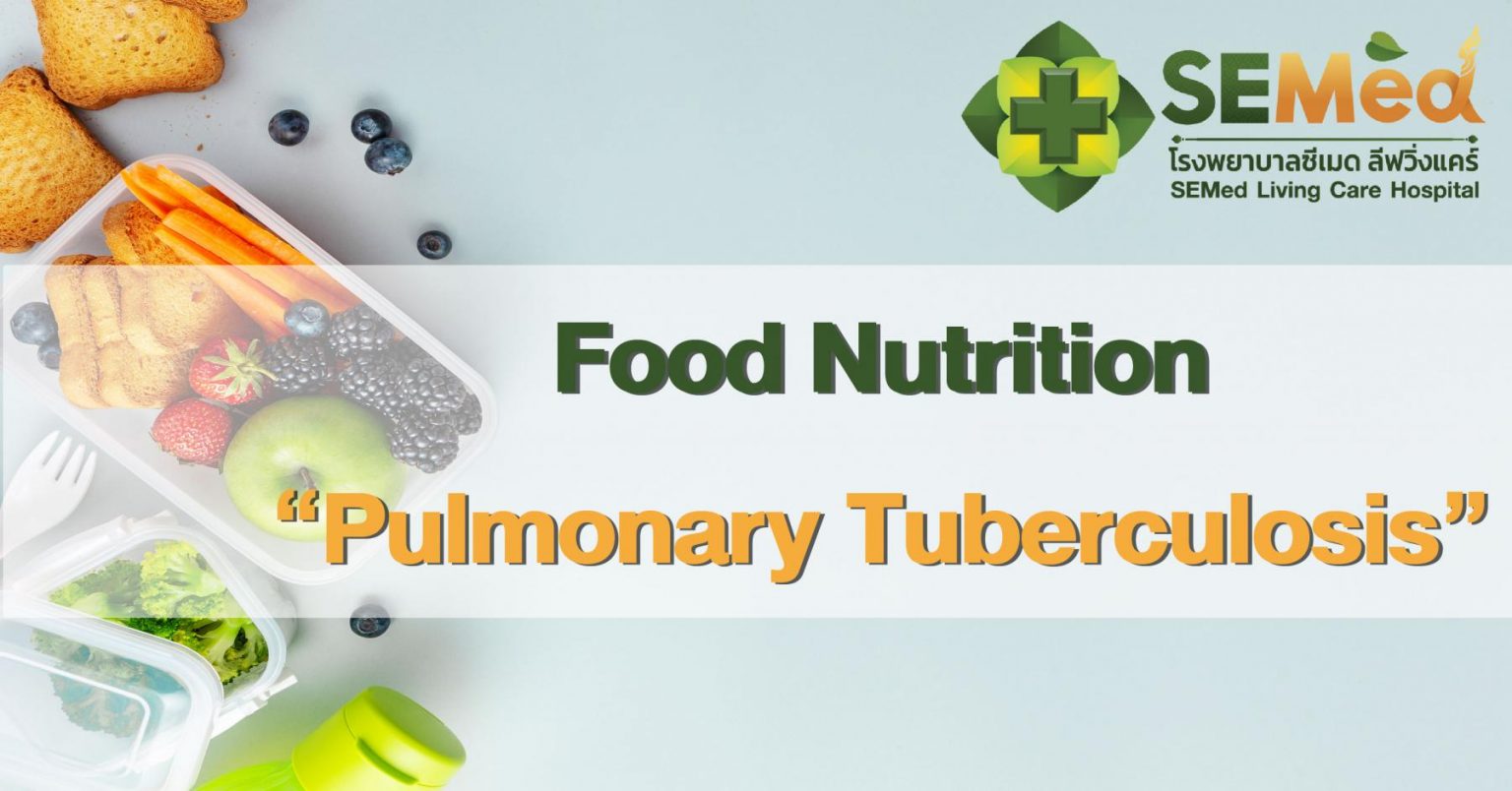
Nutrition for Pulmonary Tuberculosis Patients
Tuberculosis (TB) is a significant public health issue in Thailand. In 2015, the World Health Organization (WHO) classified Thailand as one of the 14 countries facing severe TB problems globally, estimating around 120,000 new TB cases annually. Tuberculosis is an infectious disease caused by bacteria and can be spread through coughing, sneezing, and droplets from the lungs of TB patients. Individuals contract TB by inhaling these airborne bacteria into their lungs. Common symptoms of pulmonary TB include loss of appetite, coughing, phlegm, fatigue, shortness of breath, and altered taste, which can result from both the disease and side effects of medication. These symptoms often lead to rapid weight loss, increasing the risk of malnutrition, which can further exacerbate the disease and intensify adverse reactions to treatment.
Malnutrition and Tuberculosis
Typically, TB patients receive treatment and medication according to medical guidelines. However, nutrition is another critical factor that TB patients or their caregivers must consider. Due to the symptoms mentioned earlier, patients often have reduced food intake, leading to a rapid weight loss of 3-5 kilograms within 2 weeks. This weight loss impacts the Body Mass Index (BMI), often dropping below the normal range, and results in muscle mass loss due to insufficient nutrient and energy intake. This can affect overall health, leading to reduced immunity, slow wound healing, thin skin, increased infection risk, weakness, difficulty in movement, pressure sores, chronic wounds, and ultimately, an increased risk of mortality.
Nutritional Guidelines for Tuberculosis Patients
Consume a Balanced Diet: Eat from all five food groups to ensure adequate nutrient intake.
- Protein-rich foods such as meat, eggs, and legumes help build immunity and prevent muscle loss.
- Carbohydrates from whole grains like brown rice and whole wheat bread provide B vitamins, which can reduce tingling in the extremities and boost appetite.
- Vegetables and fruits should be varied to provide essential nutrients and strengthen the immune system, helping prevent respiratory infections.
- Healthy fats from sources like rice bran oil, soybean oil, and corn oil provide energy and warmth. Choose fats with good fatty acids.
Increase Meal Frequency: If food intake is low, divide meals into 5-6 smaller portions throughout the day, each containing a source of protein. Incorporate healthy fats like omega-3 fatty acids to ensure sufficient nutrient and energy intake.
Daily protein intake should be 1-1.2 grams per kilogram of ideal body weight.
Avoid Certain Foods: If the patient has a cough and phlegm, avoid fatty meats, animal skins, fried foods, oily foods, coconut milk, cold drinks, and oils high in saturated fats (e.g., animal fats, palm oil, coconut oil). Also, avoid gas-producing foods such as pickled items, beans, carbonated drinks, alcoholic beverages, strong-smelling foods, and instant foods like instant noodles.
Avoid Alcohol and Smoking.
In addition, TB patients or caregivers should regularly weigh the patient, at least once a week, to monitor weight loss and assess the risk of malnutrition. This information can be shared with the treating physician and a multidisciplinary team to evaluate, plan, and support the patient’s recovery through nutrition, self-care, and appropriate exercise.

